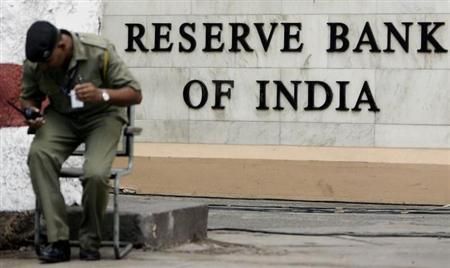 | « Back to article | Print this article |

The RBI Governor repeated his penchant for surprise, having done two out-of-schedule reductions a few months ago.
In Tuesday’s monetary policy announcement, Reserve Bank of India Governor Raghuram Rajan reduced the repo rate by 50 basis points, 25 more than most were expecting.
In doing so, he repeated his penchant for surprise, having done two out-of-schedule reductions a few months ago.
A lot of people, in government and business, will seek to take credit for this uncharacteristic dovish action, but Dr Rajan is very much his own person and did what he thought was appropriate, the public pressure notwithstanding.
In effect, he back-loaded a 25-basis point reduction that could have been done in the previous announcement.
But, then, he held back until the state of the agricultural sector and its implications for food inflation was a little clearer.
Having reassured himself that the weak second-half monsoon was not going to have much of an impact, he acted decisively.
The statement explicitly acknowledges steps taken by the government to keep food prices in check, notwithstanding the temporary blip in onions.
Overall, the RBI has brought down its forecasts of both year-end inflation and growth, from 6 to 5.8 per cent and 7.6 to 7.4 per cent respectively.
Against this backdrop, it seemed perfectly logical to combine the potential 25-basis point cut in August with the justifiable 25 bps one yesterday and make a larger than expected move.
The technical impact is the same, while the psychological one is a lot more significant, as reflected in the response of the markets.
Indian equities went strongly against the generally downward global movement entirely on account of the rate cut.
But, what is next?
The message in the announcement is that the RBI may be done for a while.
There is an explicit reference to the desirable level of the real yield on 1-year government securities.
Dr Rajan believes that this should ideally be in the range of 1.5-2 per cent in the current macroeconomic situation.
With the nominal yield at around 7.3 per cent, the real yield is much higher than the range going by the August inflation number.
However, the year-end forecast of 5.8 per cent brings it to the bottom end of the range.
Beyond this signal, there was also the declared intent to hasten the downtrend in inflation by setting a target of five per cent in 2017.
Both these indications suggest that the RBI’s baseline scenario, predicated on its current forecasts, is for no further cuts.
These can only happen if the inflation number undershoots the forecast.
This policy announcement also contained the regulatory and market development component.
This section reveals a broad-based effort by the RBI to implement changes, both minor and major, in the regulatory framework for banks, markets and the external sector.
There is a welcome move to reconcile the held-to-maturity portfolio of securities, which are exempt from mark-to-market requirements, with the Statutory Liquidity Ratio.
This will induce banks to become more active in trading government securities, which, along with a series of other measures, should push a deepening of this very critical market.
On the external front, as part of a wider reform agenda on external commercial borrowings, Indian companies will be allowed to issue offshore rupee-denominated bonds.
All in all, a good day’s work at the RBI.